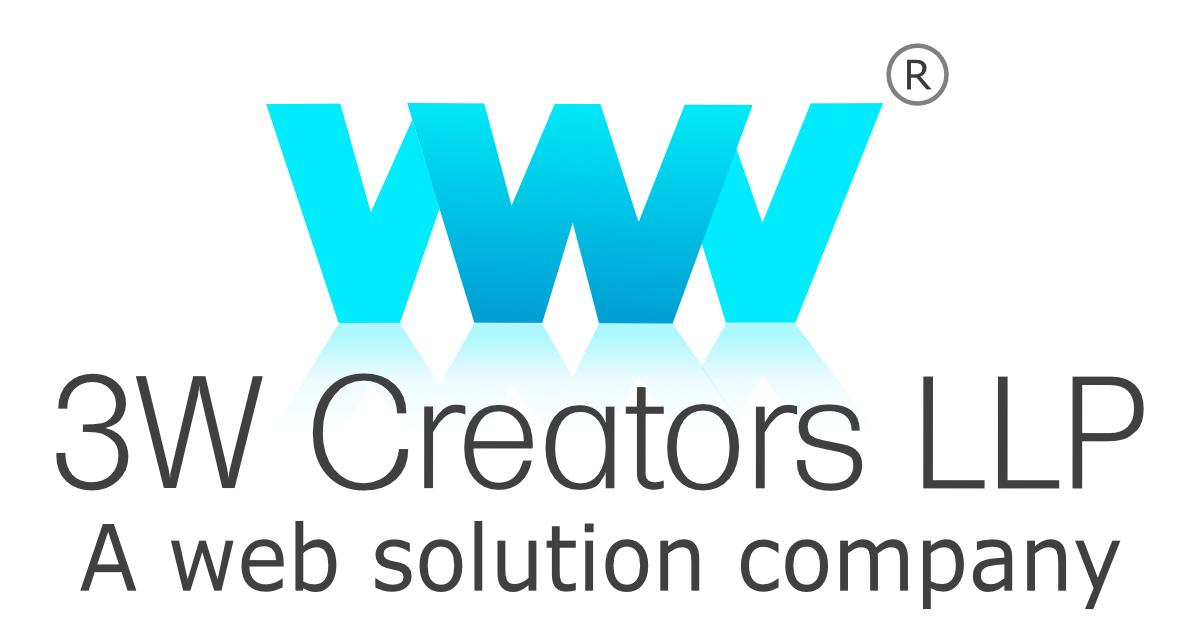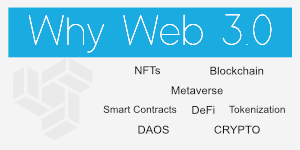Web 3.0, as the name itself suggests, is the emerging phase or the latest phase of the evolution of the internet. Web 3 or Web 3.0, is based on the concept of creating a totally decentralized ecosystem. This new technological dimension believes in leveraging the power of A.I., machine learning, and the latest technologies like blockchain to solve the problems of the present-day internet/online ecosystem.
How is Web 3.0 going to be different from the previous versions of the web?
Web 1.0 or the very first version of the internet was only a basic read-only version of the internet. It did not allow much functionality or flexibility to the users. The users were only allowed to read information from the websites. The second generation of the internet, or Web 2.0, i.e. the stage of the internet that we are at right now allowed a bit more flexibility. Web 2.0 gave the users the flexibility not only to read but also to write, upload, send & receive various forms of content – text, image & video, via the internet. So, Web 3.0 is bound to be better and much more advanced than the internet that we are used to today.
In other words, Web 3.0 refers to a new, improved, and democratized, internet ecosystem which will be free from any sort of central authority. Using blockchain technology Web 3.0 can transform the way we use the internet. It has the potential to open up a whole new dimension of the internet. People will be able to buy, own, sell and earn by selling their digital content in the form of NFTs. Once Web 3.0 is widely accepted, various uses of blockchain technology like smart contracts, decentralized apps (DApps’), will become more popular.
What will be the primary features of Web 3.0?
The basic idea behind the concept of Web 3.0 is to make the internet a smarter place. This new era of the web will make the internet more responsive, intelligent, and capable of giving a more satisfying and tailored experience to the user. It will totally transform the way we know or use the internet today. In order to understand the possible changes that we might see in Web 3.0 we would need to know the following four main pillars/features of Web 3.0:
Artificial Intelligence – One of the primary features of Web 3.0 will be its ability to decipher human emotions and thoughts. Artificial Intelligence or AI will be used extensively to filter data and content and to tailor the search results according to the user’s preference.
Semantic Web – Semantics is the study of the linkages between words. The semantic web would enable the computer to analyze data and decode the meaning and emotions that they are trying to convey. This will help in giving a better and more pleasing internet usage experience to the users.
Ubiquity – Ubiquity means the power to be present everywhere at the same time, or in simpler words, ubiquity means omnipresence. Now Web 2.0 or the internet as we know it today is already quite omnipresent. So Web 3.0 will simply take it a step further by making the internet more widely accessible using the Internet of Things (IoT).
3D Graphics – Web 3.0 will bring in the new graphics technology, making the three-dimensional virtual world a reality. The use of 3D graphics will make the internet user experience more immersive and will also be helpful in transforming a variety of sectors like health, e-commerce, real estate, etc.
What role will blockchain technology play in Web 3.0?
Well as far as improving the internet and increasing its efficiency is concerned, Web 3.0 powered by blockchain technology can really be helpful in many ways. Using blockchain technology the speed of transactions can improve to astonishing levels. From 7 transactions per second (TPS) with Bitcoin in the initial days to 50000 TPS with Solana today, blockchain technology can really transform the course of the future of the internet and how we are accustomed to using it. If used properly, blockchain technology can help improve not only the digital transaction sector but also the digital health care sector, supply chain sector, and many other important sectors in the market. Blockchain technology can also redefine the way we are used to seeing social media sites.
However, despite all the big promises that Web 3.0 and blockchain technology have, the implementation and adoption of these technologies in real-life scenarios will take a lot more time than we can expect. Blockchain technology, like any other technology, has a few drawbacks of its own. Thus implementing the blockchain technology in the mainstream will be a bit of a challenge, until and unless the associated problems have been dealt with. The way Web 3.0 will be adopted in the mainstream and what changes it will bring to the way we are used to is only for the time to table. But one thing is for sure the future of the internet is bound to be interesting.

